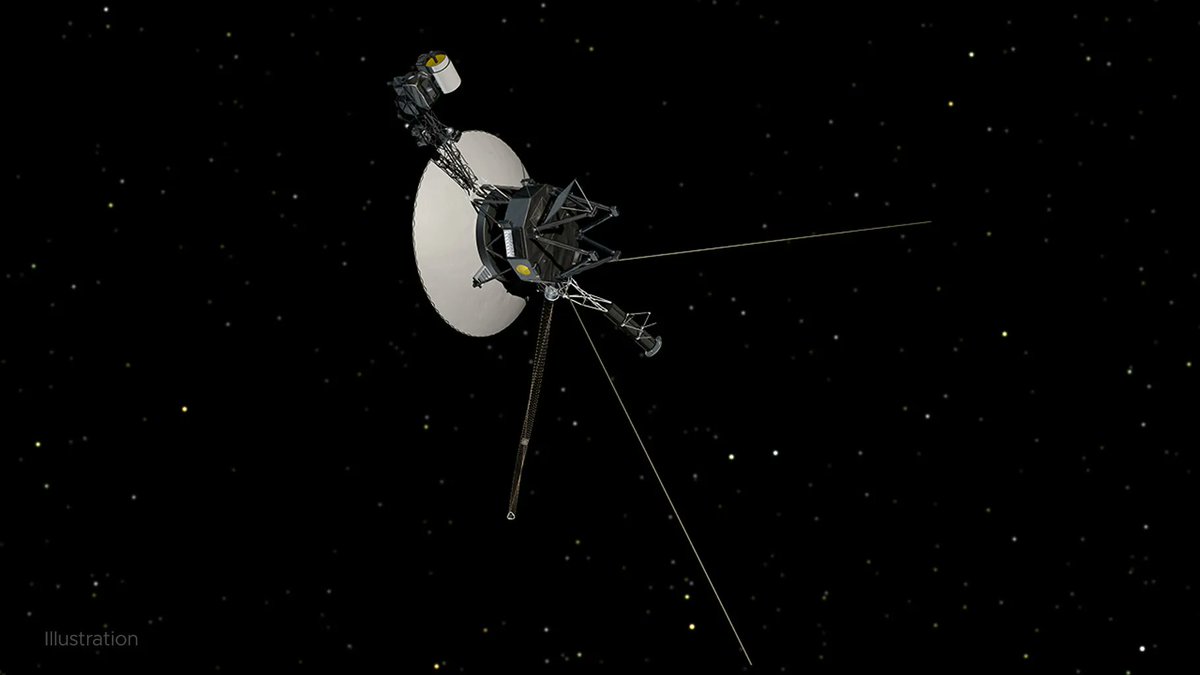Old computer systems have a lot of wacky ways to fail. Computers that are constantly blasted by radiation have even more wacky ways to fail. Combine those two attributes, and eventually, you’re bound to have something happen. It certainly seems to have with Voyager 1. The space probe, which has been in active service for NASA for almost 45 years, is sending back telemetry data that doesn’t make any sense.
At this point in the probe’s journey, that’s surprisingly not that big of a deal. Telemetry data helps position Voyager’s science instruments and its high-gain antenna that allows it to talk to Earth continually. Both of those systems seem to still be in working order, as the data science instruments are sending back good readings, and those readings are getting to Earth, which shows that the antenna is still pointed in the right direction.
What might be causing this strange data is a mystery at this point. Engineers are trying to narrow down the problem. Their first step is to determine whether whatever is causing the randomized data is in the attitude and articulation control system (AACS) or some other sub-system that feeds data into it.
One thing the bogus data hasn’t done is trigger any of the “safe mode” operating systems for the probe, which could have shut down much of its functionality. Other than the wonky data, Voyager 1 is operating normally and continues to send valuable scientific data from 14.5 billion miles away. It and its sister craft, Voyager 2, are our only probes to have currently gone outside of the solar system and are able to collect data where no one has gone before.
Voyager 2 seems to be acting fine as well, returning normal telemetry and other data from 12.1 billion miles away. That points to something specifically going wrong with Voyager 1’s systems. Potential solutions include software changes or switching to a redundant hardware system typically used for backup.
This wouldn’t be the first time Voyager’s engineers would bring up a backup system. In 2017, the probe’s main thrusters began to fail, so the flight engineers switched to thrusters that were initially used to maneuver the probe around planets back in the 70s. They worked like a charm, even though they hadn’t been used in 37 years.
There is a longer-term problem, though – every year, the reactor that has been powering Voyager all this time produces four fewer watts per year. Over time this has caused the mission team to turn off some of the craft’s subsystems in an effort to direct the power where it is needed most. Eventually, all of them will have to be powered off. Still, until that time, which seems to be later than 2025 at least, the mission team will keep getting as much invaluable data as possible from the most distant ambassador of our species.
Learn More:
JPL – Engineers Investigating NASA’s Voyager 1 Telemetry Data
UT – NASA has Figured Out How to Extend the Lives of the Voyagers Even Longer
UT – How Long Does It Take to Get to Jupiter?
UT – 25 Years Since Voyager’s ‘Pale Blue Dot’ Images
Lead Image:
Artist depiction of Voyager 1
Credit – NASA / JPL-Caltech


This could explain:
Go, Voyager!
“Fly me up to where you are beyond the distant star. I wish upon tonight to see you smile, if only for a while to know you’re there.”